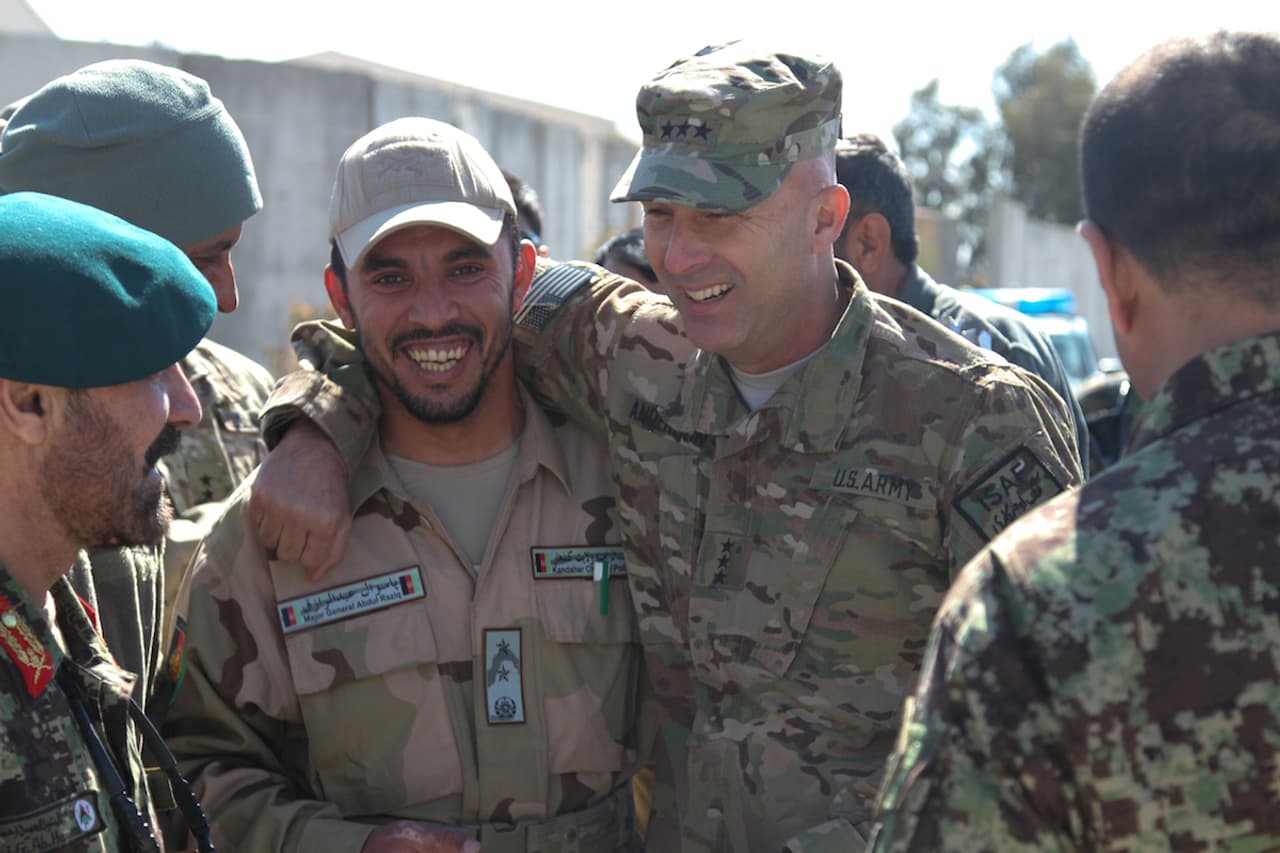
Anatomy of a US airstrike: Are Afghan strongmen calling the shots?
Afghan police commander Sadiqullah Sadaqat was taking a brief break from duty to buy lunch for his men. They were defending a security post on the outskirts of Tarin Kot, the capital city in the southern province of Uruzgan. The Taliban had launched a fierce battle for the city ten days earlier.
Sadaqat had been asked by local strongman Rahimullah Khan - the commander of a highway linking Tarin Kot to the major city of Kandahar - to defend a post located on this strategic stretch of road.
Tarin Kot was at risk of falling into Taliban hands, leading the Kabul government to call in General Abdul Raziq - the police commander of Kandahar province - to help defend it. Sadaqat was one of hundreds of men of diverse affiliations, some in uniform, some not, who were holding the line against a bold enemy.
Sadaqat had raised a group of sixteen men to man the post. But when he got back from lunch that day on September 18, he found nearly half of them dead.
It was not the Taliban that had killed them, but an airstrike ordered by General Raziq, the strongman called in from Kandahar (pictured in main image). One man died in an initial strike on a small post located above the main checkpoint and then a second attack, known as a “double tap” strike, took out a further six who rushed to help. Sadaqat heard the Taliban crowing over the attack on the radio as he prepared to head back.
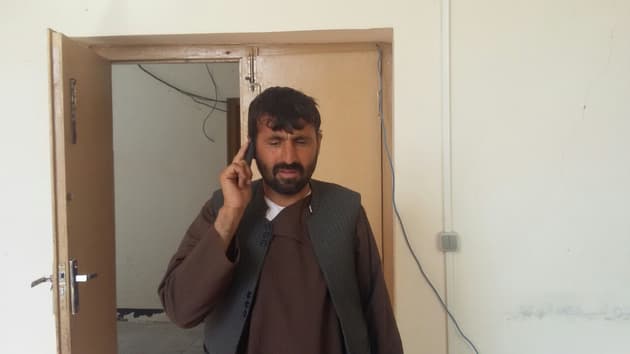 Seven of police commander Sadiqullah Sadaqat's men died in the strikes last September
Photo supplied
Seven of police commander Sadiqullah Sadaqat's men died in the strikes last September
Photo supplied
The men were "torn into pieces by the Americans", said Sadaqat, whose brother and cousin died in the strike. "God knows what happened, I do not have any information on what really happened or why it happened."
The story of the friendly fire incident at Tarin Kot underscores the chaos on the ground in Afghanistan. Afghan security forces who are now leading the fight against the Taliban, with US support, are leaning on local warlords and irregular forces. Keeping the Taliban at bay depends to a large part on all these actors’ ability to work together. If Tarin Kot is anything to go by, the signs are not promising.
The battle for Tarin Kot
The Taliban made a push for Tarin Kot in early September. As they advanced closer to the city, government officials began to warn of its potential fall. The Afghan troops defending it were overstretched and complained of shortages in supplies from ammunition to food as they struggled to hold the insurgents back.
Rahimullah was in charge of the highway at the time of the strike. He had previously been deputy police chief of the province, a title given to him following the assassination of his brother, provincial police chief Matiullah Khan.
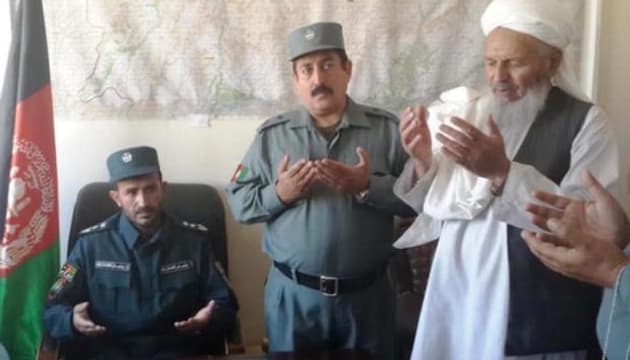 Rahimullah (left) was a regional police commander in charge of the highway
Photo by Afghan news agency Pajhwok
Rahimullah (left) was a regional police commander in charge of the highway
Photo by Afghan news agency Pajhwok
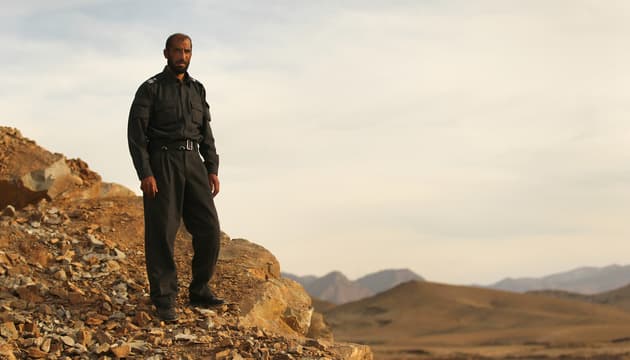 Matiullah Khan, Rahimullah's brother, had a vast private militia before he was assassinated
Photo via Sydney Morning Herald/Getty
Matiullah Khan, Rahimullah's brother, had a vast private militia before he was assassinated
Photo via Sydney Morning Herald/Getty
Matiullah had run the highway much like a business, garnering large sums of money through contracts to secure the route for Nato convoys using his vast private militia.
Rahimullah was keen to become police chief after his brother’s death, but the Kabul administration appointed him as deputy police chief instead. He was sacked less than a year later - and sources say he then whipped up trouble in the fragile province, forcing the government to offer him the position of highway police commander.
With the advance of the Taliban, General Raziq was sent to Tarin Kot, alongside the 205th Atal Corps, to get hold of the situation.
Raziq had his own troubled history, having been accused of a litany of human rights violations. The EU Special Representative to Afghanistan said he admitted killing 16 tribesmen found with gunshot wounds to the head, while Human Rights Watch has documented a trail of tortured corpses coming from police units reporting to Raziq.
But Raziq is seen as vital to Kabul’s plans to stabilise southern Afghanistan. He was also credited with stabilising neighbouring Kandahar with his no-mercy response to Taliban insurgents. An unnamed US official told the Washington Post in 2010: “If you need a mad dog on a leash, he’s not a bad one to have.”
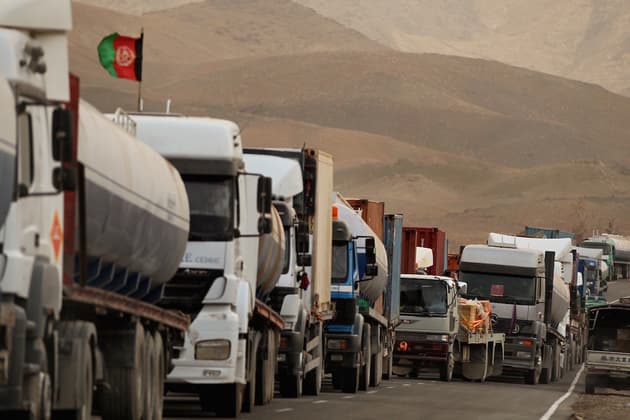 The highway linking Tarin Kot to Kandahar is a strategic stretch of road
Photo by Kate Geraghty/Sydney Morning Herald/Fairfax Media via Getty Images
The highway linking Tarin Kot to Kandahar is a strategic stretch of road
Photo by Kate Geraghty/Sydney Morning Herald/Fairfax Media via Getty Images
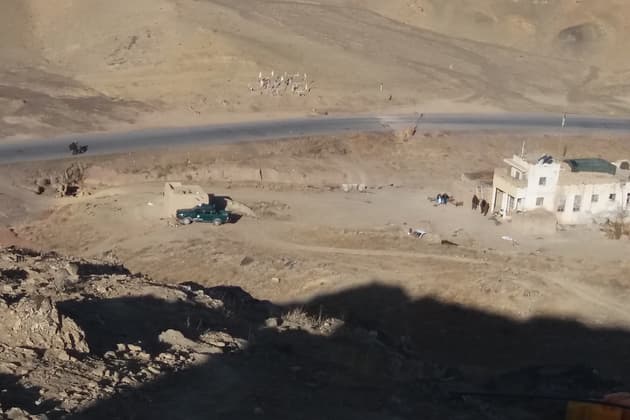 The checkpoint was hit by US strikes
Photo via Sadiqullah Sadaqat
The checkpoint was hit by US strikes
Photo via Sadiqullah Sadaqat
US airstrike called in
Raziq told the Bureau he had called in a US strike after armed men were seen firing on traffic travelling on the highway. Numerous reports had come in confirming they were enemy fighters, Raziq said.
According to Raziq, the group were observed from the air from 8am to noon local time on the morning of September 18. He said that he checked at several points with Rahimullah’s men who denied the presence of police in the area. He then called in a US strike, which hit the group at midday.
Reports quickly surfaced that the US strike had killed Afghan policemen and not Taliban insurgents. Responding, the US said it did not have specific information on who the people were who were hit, other than knowing they were “individuals firing on, and posing a threat to, our Afghan partners”.
Raziq says that regardless of who was at the checkpoint, they were acting in support of the Taliban. If they were policemen, they were “simply bearing the name” of the police and were supporting the insurgents. For him, it is clearcut: “They were threatening the highway, were firing at the traffic and were going to close the road,” he said. “So would you consider them other than the Taliban?”
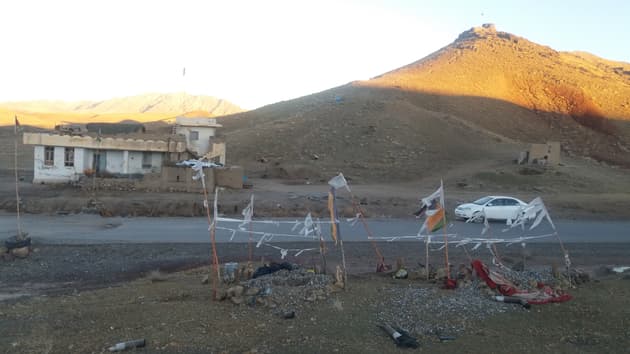 The hilltop lookout post that was hit by the US strikes can be seen in the top right of the photo, with the checkpoint on the left. In the foreground is a makeshift memorial for the people who died.
Photo via Sadiqullah Sadaqat
The hilltop lookout post that was hit by the US strikes can be seen in the top right of the photo, with the checkpoint on the left. In the foreground is a makeshift memorial for the people who died.
Photo via Sadiqullah Sadaqat
The situation on the highway is now under control since Rahimullah was sacked from the position, Raziq says.
Rahimullah disputes the version of events presented by Raziq, who he says is trying to become the “King of Southern Afghanistan”. He claims both the main and small posts were marked by Afghan flags and those manning it were wearing uniforms. Sadaqat says that the main checkpoint was clearly an official government post, with three US-made vehicles supplied to the Afghan police parked nearby.
According to Sadaqat, two policemen, one in uniform and one in civilian clothes, were positioned on a small post above the main checkpoint. He says the strike hit the small post at 11am while the uniformed officer was collecting water, killing the one policeman not in uniform. The six others killed in the second strike were all in uniform, he added.
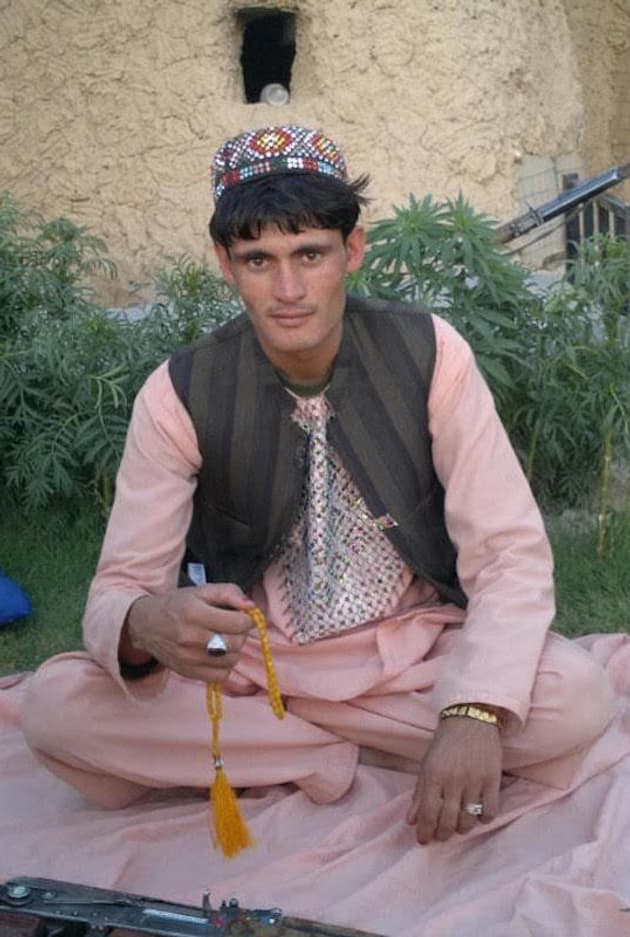 Sadaqat's 22-year-old brother Sardar Wali was killed in the strike
Photo via Sadiqullah Sadaqat
Sadaqat's 22-year-old brother Sardar Wali was killed in the strike
Photo via Sadiqullah Sadaqat
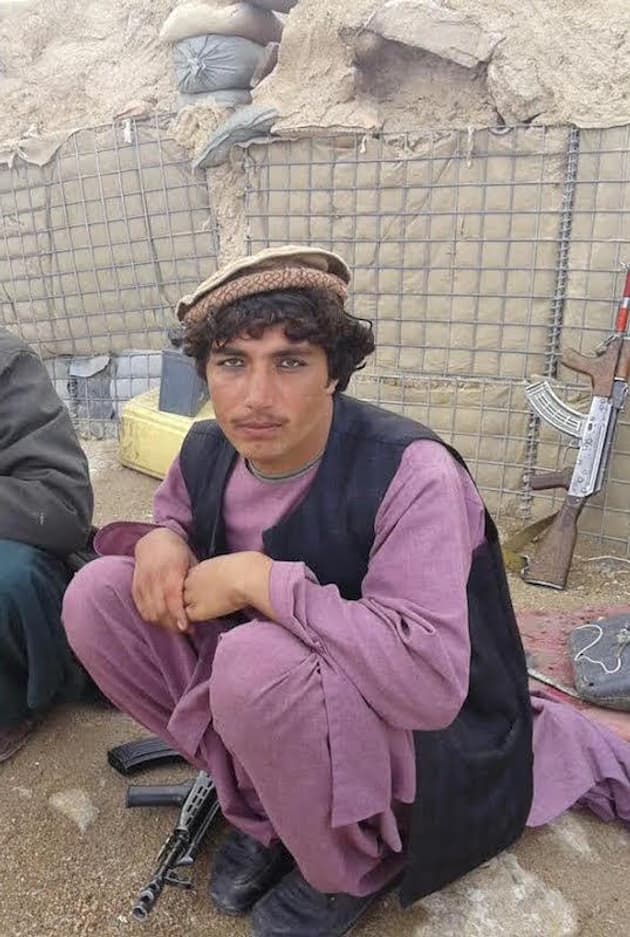 Mousa Kalim, 24, was another of the seven men who died.
Photo via Sadiqullah Sadaqat
Mousa Kalim, 24, was another of the seven men who died.
Photo via Sadiqullah Sadaqat
Holding the line
The situation in Uruzgan at the time of the strike was chaotic - policemen were holding the line against the insurgents, some in uniform and some not, while there were reports of checkpoints being surrendered, abandoned or manned by turncoats.
The US has withdrawn the majority of its troops from Afghanistan, with those remaining in country focused on training local forces. The responsibility for security has shifted to the Afghan National Security Forces (ANSF), but an increasing number of US strikes are becoming necessary to stop key cities falling into Taliban hands.
Afghan forces are thinly spread in provinces like Uruzgan and a lack of central government presence in such places means security often rests on local warlords and strongmen that now occupy senior security positions.
In Uruzgan, this had been Matiullah Khan. Once the brutal enforcer and even hitman for his uncle - a governor considered so violent that his disposal was the one condition the Dutch imposed for joining the international coalition in Afghanistan- he rose through the ranks to become police chief, allied with the Australians and Americans.
“Generally speaking the central government didn’t worry much about Uruzgan as long as Matiullah was there,” says Lenny Linke, a researcher with the Afghanistan Analysts Network. After his assassination, the situation in the province did not “crash and burn”, but took a “slow descent”, she says.
The decline was gradual because Matiullah had entrenched his position as the leading powerbroker in Uruzgan by establishing administrative structures that superseded Kabul’s representatives in the province. Linke says these structures survived his death but they eventually started to break down as did the fragile stability, leading to the state Uruzgan finds itself in now.
“Matiullah Khan was a stabilising factor in Uruzgan when things went his way,” says Colonel James Creighton, a former US commander in Uruzgan who met with Matiullah once a week. “By the time I left I felt comfortable walking down many streets without body armour.”
But figures like Matiullah, and also Raziq, blur the line between the Afghan National Security Forces and informal security providers such as warlords and strongmen. Recruited by the US-led coalition to join the fight against the Taliban on account of the power they wielded, they were then propelled into positions of importance in the Afghan government. Now most Western troops have left, these figures are still central to security in provinces across Afghanistan.
“Part of the problem is that the Afghan government has no strategy for how they’re going to be successful in this war,” says Chris Kolenda, a former US military commander in Afghanistan who also wrote a paper for the Open Society Foundation on civilian casualties in the country. “And there is no coordinated US-Afghan strategy for how to bring this war to a successful conclusion.”
Such problems can lead to an over-reliance on people like Matiullah Khan, said Kolenda: “People who tend to operate outside the law and whose predatory actions may mobilise people against the government”.
As Kabul continues to fight for control of the country with a security force plagued by unsustainable levels of deaths and defections, reliance on figures like Rahimullah or General Raziq is unlikely to end. As they blur the line between regular forces and private militias, further confusing the situation on the ground, there will be more strikes like that against Sadaqat and his men at the checkpoint.
Main image of General Raziq being greeted by Lt. Gen. Joseph Anderson, Commander of International Security Assistance Force Joint Command, in Feburary 2014 by Sgt. Antony Lee/US Army


